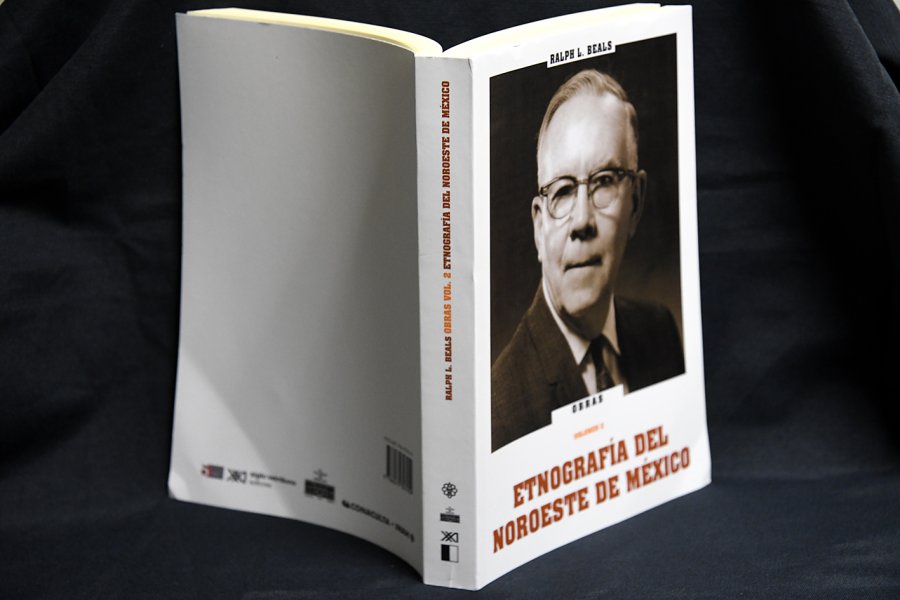Noticias
Publication of anthropologist Ralph L. Beals´s texts
April 09, 2018In the 1930s and 1940s, the American anthropologist Ralph L. Beals (1901-1985) carried out outstanding fieldwork in our country. He wrote numerous articles and reviews about the northwestern region of our territory, some of which are contained in the book Etnografía del Noroeste de México, volume 2.
The publication of the collection Los once ríos (The Eleven Rivers), edited by Siglo XXI Editores, El Colegio de Sinaloa and INAH, is based on the prologue by Jesús Jáuregui, a biography of the anthropologist written by his younger brother Alan R. Beals and texts originally published in North American bulletins and magazines.
The book opens with the text Pimas, Pápagos and Western Apaches: A Comparative Sketch, in which Beals addressed the similarity of Arizona's lowland populations to the Yaquis and Mayos. He defined the pima and pápagos as long-established populations and the Apache as foreigners from the north.
This article was prepared in 1934 for the Field Division of Education of the National Park Services, and was intended to provide an outline of appropriate ethnographic data for use in the development of a museum exhibition for the creation of a museum at the Tumacácori National Monument.
Beals stated that the groups compared are remarkably different, linked to the foundation and history of the Tumacácori mission and to other missions in Arizona and northern Sonora. He said that they differed radically in speech, temperament, culture and racial composition.
The former professor emeritus of anthropology at UCLA compared the three groups in terms of their physical characteristics, language, tribal divisions and settlements, population, environment, agriculture, wild plants used, cooking, housing, household goods, basketry, textiles, ceramics, weapons, clothing and ornaments, games and musical instruments.
The second section contains two articles published in American Anthropologist: 1. Unilateral Organizations in Mexico, and 2. The Sacred Jesters of the Pueblos Indians and Mayos-yaquis, written by Beals with Elsie Clew Parsons.
This second essay compares the buffoon characters of New Mexico's Indian villages with those of the Mayans and Yaquis, establishing similarities and their respective peculiarities/differences in terms of organization, dress, behavior, and function.
In the third section you can read the article La cultura contemporánea de los indios cahitas (Contemporary culture of the cahita Indians), originally published in the bulletin no. 142 of the Smithsonian Institution Bureau of American Ethnology, in 1945.
Here, Ralph L. Beals presented a general description of the contemporary culture of the Yaqui and Mayan Indians, addressing aspects of worldview, dress, religion and customs, the result of field work between 1930 and 1932.
La investigación de carácter regional, se explica, fue realizada con el enfoque histórico comparativo, que pretende contrastar con los estudios sincrónicos de comunidad, basados en el enfoque funcionalista.
In the fourth section of the volume, the reader will find reviews that the anthropologist wrote for the American Anthropologist magazine, including. The Tarahumaras: An Indian tribe from northern Mexico; Studies on the Yaqui Indians of Sonora, Mexico, The Huicholes: a people of primitive artists.
Also, Pascua: a Yaqui village in Arizona, Hunters and gatherers of the Great Southwest: A problem of classification; Yaqui myths and legends; The Cross of the House of the Mayan Indians in Sonora, Mexico: a symbol of ethnic identity; The Tepehuans: their material culture; and A Sonoran fantasy or coming of age?
Ralph Leon Beals was one of the most prominent American anthropologists of the 20th century. He was formed in the comprehensive Boasian perspective, made up of ethnology, linguistics, archaeology and physical anthropology, rooted in California at the beginning of the 20th century, based on the teachings of Alfred Louis Kroeber, Robert H. Lowie and Edward Winslow Gifford.
Throughout his career he showed his permanent and respectful interest in Mexican anthropology. As a practitioner of the comprehensive anthropological perspective, he conducted ethnographic and ethno-historical, and to a lesser extent, archaeological studies of indigenous peoples in six regions of the Pacific North American, Mexican and South American territories.
In the prologue, INAH researcher Jesús Jáuregui states that Mexican anthropology has treated Beals' ethnographic work with disdain, when his work is a must-read for anyone who wants to know the history and geography of the region.
Ralph L. Beals, Ethnography of Northwest Mexico, volume 2, Year of publication: 2016. Edition: 1ª, 412 p. Publisher: Siglo XXI Editores/COLSIN/CONAC.
Mexico,Distrito Federal
